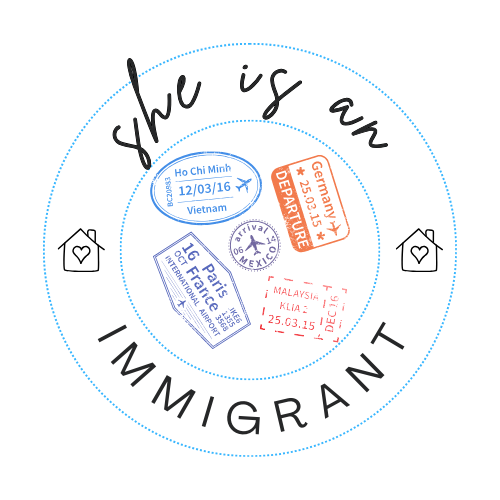I went from Chiang Mai to Pai in April 2025, and here are all the things you need to know to get ready for the journey.
The Pai town is an amazing place, one of the must-visit in Southeast Asia alongside Chiang Rai, Hanoi, Bali, with a hippy vibe, live music, restaurants, and cafes within walking distance from your hostel, and lots of activities outside the village.
This small town has its own pace; it will be a great place to relax, do some focused work, practice yoga, or reconnect with nature.

Table of Contents
Departing from Chiang Mai to Pai On a Minivan
Minivans are running on schedule and pretty often, and you can easily book it on 12go Asia.
My partner booked for both of us and simply sent me the PDF. You don’t have to print it, and it is also easier than buying in person since the interface is in English.
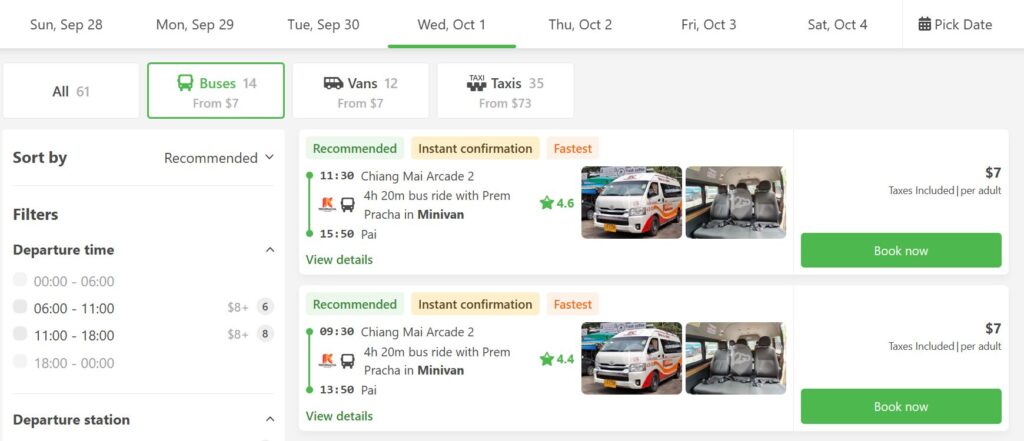
Most minivans leave from 8 AM to about 2.30 PM to Pai and cost around 7 USD per person. We usually go with Prem Pracha and are happy with them, they also have the most buses running daily.
Prem Pracha buses run 15 times a day:
6.30 AM / 7.30 AM / 8.30 AM / 9 AM / 9.30 AM / 10 AM / 10.30 AM / 11.30 AM / 12.30 PM / 1.30 PM / 2 PM / 2.30 PM / 3.30 PM / 4.30 PM / 5.30 PM
The buses are leaving from the bus terminal, Chiang Mai Arcade 2 (Google Pin). Taxi drivers like Grab or Bolt know where is it and if you tell them you’re going to Pai they will drop you right where you need.
It is a simple terminal, but there are a few seats to chill and a few stalls selling snacks. The corner from where the vans to Pai leave is one facing 7-Eleven (Google Pin)
Luggage is handled in two ways:
- Older vans have a rack on the roof with a waterproof cover.
- Newer vans have a little space in the “cabin” just behind the last seats.
I prefer the roof transportation method since it offers more space for everyone’s luggage (and vans are usually completely full!), and you don’t have to be cramped against someone’s bags inside.
In any case, I don’t recommend carrying a wheeled suitcase; a backpack is more convenient. You can leave your large luggage in one of the storage units in Chiang Mai if you’re only going to Pai for a few days.
Your ticket has the seat number you can’t pick or change. It depends, but most of the time you will be asked to sit exactly at your seat number. Also depends on the other people you’re travelling with.
On our way to Pai, everyone was super chill, and nobody cared who sat down where. On the way back, there was a few young solo guys who needed to sit exactly where the printed ticket says.
Before The Trip
Unless it IS NOT your first trip, I highly recommend you take a motion sickness pill 1 hour before the ride (I had Dramamine motion sickness tablets).
I lived in a mountain city, I travel a lot, and still on the way back from Pai to CM, I forgot to take the pill, and the drive for me was miserable.
There is only one stop, and it is only 10 minutes, so you will really have to negotiate with your body and use all your willpower to control nausea. I still decided to take the pill at the stop and I think it really helped.
You should come to “check in” about 30 minutes before the bus leaves. They simply check the ticket and tell you to wait. They won’t start loading the luggage or let you sit inside, though, until maybe 10 minutes before departure.
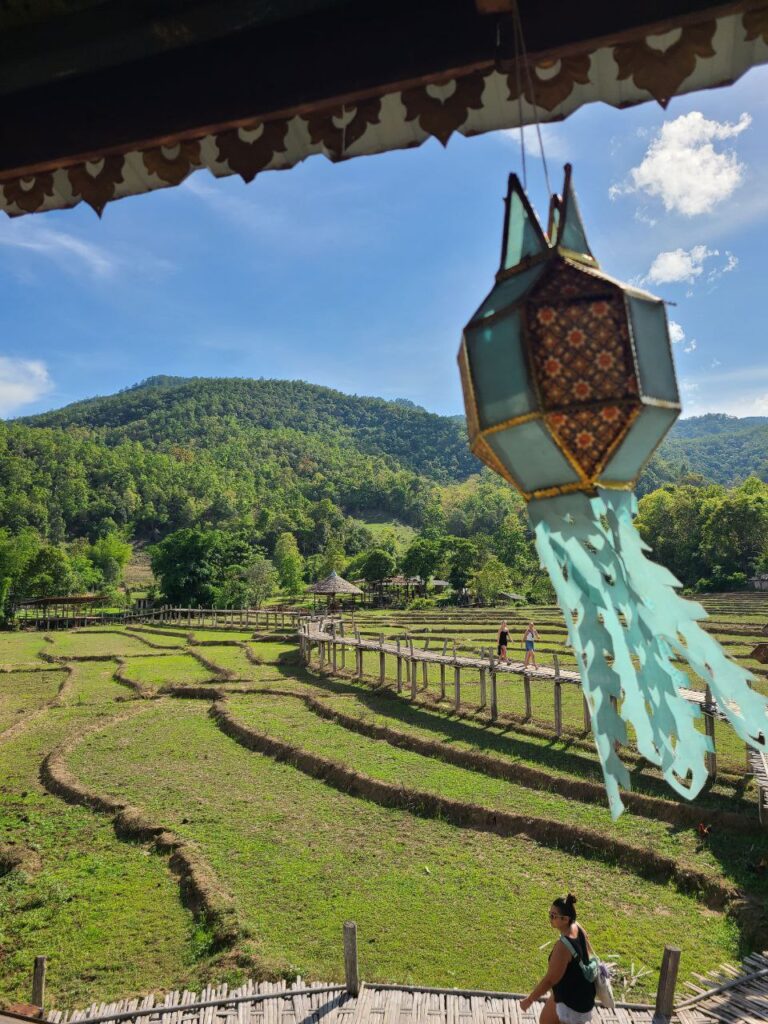
The Fun Ride To Pai
You will hear and read everywhere that drivers speed, and the ride is super scary. We went during the rainy season, and to be honest, both of our drivers were adequate and didn’t create any dangerous situations. Other cars on the road were relatively fine, too.
I’ve traveled to Bali and Vietnam, trust me, bus drivers in Vietnam are much worse! If you get car sick, though, it will most likely trigger some discomfort, so as I said, take the pill!
The distance is about 130 km, and it will take you through 762 turns along the Route 1095.
The ticket will say that you’ll get to Pain in 4.5 hours, but in my case, it was, both times, around 2.5 hrs, so pretty quick!
The road is in good condition and is actually a part of the big Mae Hong Loop.
You’re driving through dense tropical forests and around the mountains, but I wouldn’t say there are a lot of wow views.
Other Transportation Options

Private car
For a Private transfer, expect to pay about 80 to 150 USD one way, depending on how fancy the car is.
Rent a bike
If you have an international driving license, proper travel insurance, and are comfortable riding a bike in the mountains, you can make getting to Pai an adventure on its own, with as many stops as you wish (Mok Ka waterfall, cafes, geysers, and many other cool spots!)
Bikes are best for the dry season, as rains in Northern Thailand can be pretty heavy, affecting the visibility and overall safety. If you don’t have experience driving in Asia, I wouldn’t do it.
Riding a bike is also best to avoid car sickness, as you can go as fast or slow as you want! And the fresh air, and the movements on the bike feel very different from turns in cars.
Renting a bike in Chiang Mai won’t be an issue, lots of options in both old city and around Nimman, and all have pretty much the same pricing. It is fair to say, though, that if you want to have a bigger bike like an Nmax, you’ll have to hunt for it a bit longer.
Flights
Flying to Pai is no longer an option. Before 2019, there was a direct flight of just 30 minutes.
How to Get Around Pai
We chose to stay very close to the night market street but in a quiet hostel with private rooms, so we could walk around the town, and many travelers do the same – simply walk!
To get outside Pai to see waterfalls, temples, hot springs, a canyon for sunset, or hike, you can book transfers/tours right in town, they are not crazy expensive, or rent a scooter (also cheap), or a simple bicycle!
Also, don’t plan on using taxi apps; they are not really a thing in Pai.
Quick Pai Travel Guide
This is not a full travel guide to visit Pai town, but just to give you a quick idea (and get you excited about your trip!)
Pai town is really small, somewhere in Mae Hong Son of Northern Thailand. There is only about 3000 Thais living here!
Best time to visit Pai
The best months to go to Pai are from November to February, as around February starts the burning season and then the rainy season in July.
However, I went end of April and while it was raining one day non-stop, two other days during my trip to Pai were very nice, not too hot, and no burning. So just time the weather right.
Also, if you want to visit Pai waterfalls and do some rafting, the rainy season may not be the best, as it can sometimes flood.
Where to stay
We stayed at the loft room at Common Grounds Pai, around the corner from the walking street, and loved it!
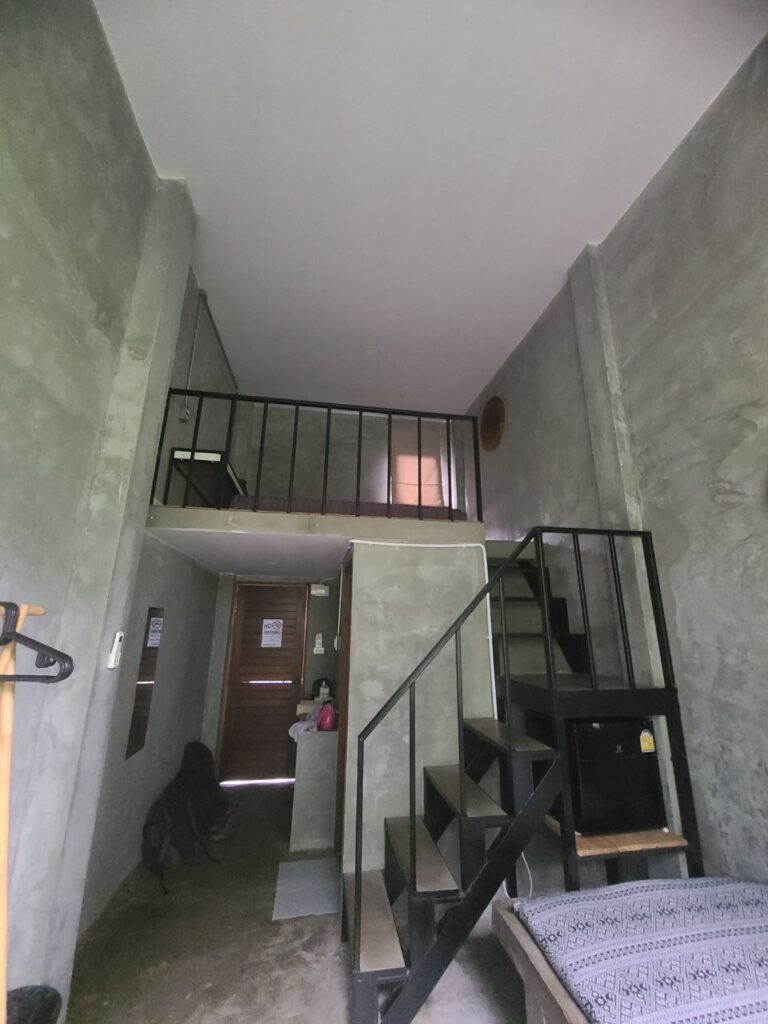
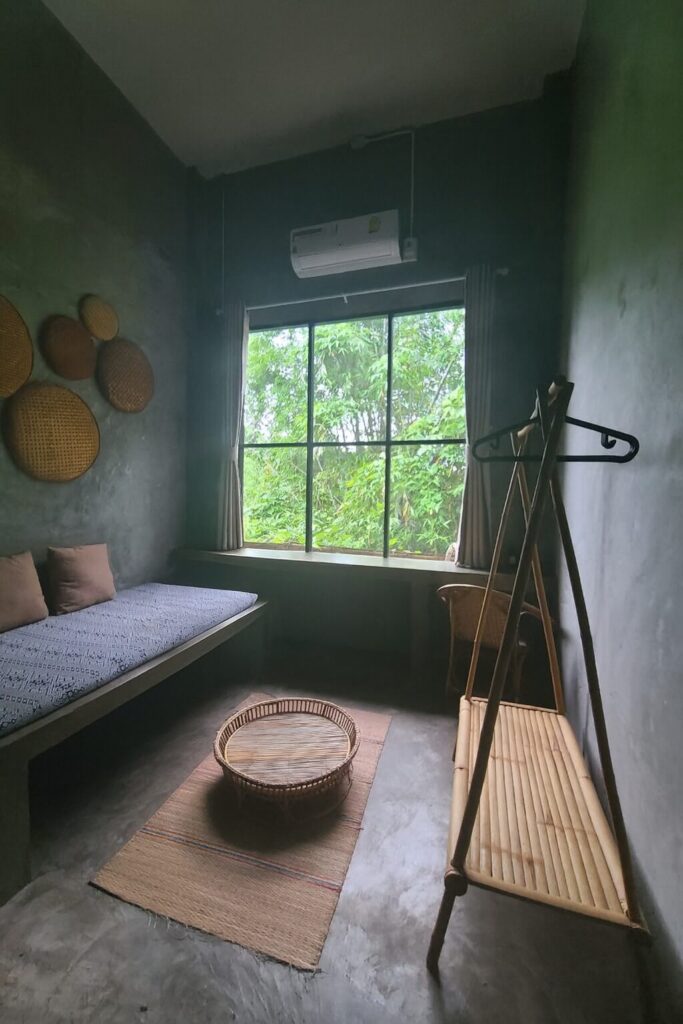
I know many travellers under 30 stay at the Revolution Hostel. I went there, and it is not my vibe as I don’t drink much or party.
What to do In Pai (2 Days)
Most accommodations have some half or full-day trips, and you can find more activities on the walking street or through apps.
If you feel lazy, you can do a cooking class at Savoie, visit the hot springs and pool, or ride a bicycle around. I loved the live music nights – they happen at many restaurants, I really liked the nights at Supermoon Bar.
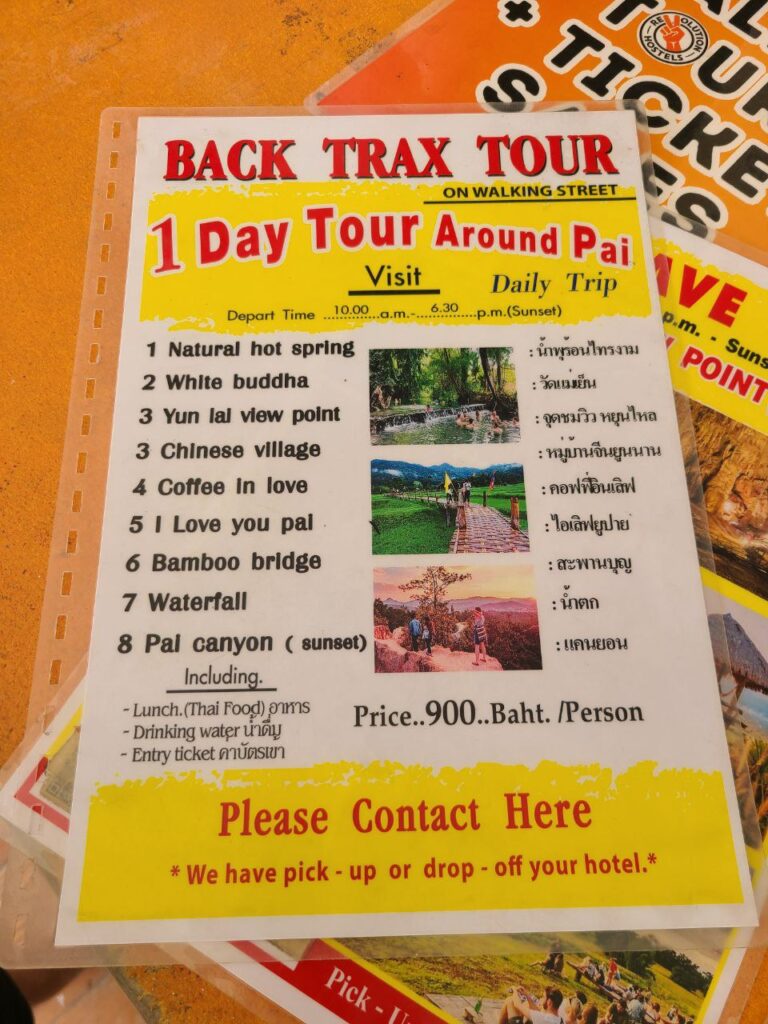
A popular day tour is to go to a few temples, viewpoints in a Chinese village, waterfalls, and a canyon for sunset. I went and I loved everything except the Chinese village – it felt too “manmade” for tourists. I loved the waterfall and Bamboo bridge area – you can easily spend about an hour there!
There are also caves, viewpoints, waterfalls, and places to stop by besides these tours, that are spectacular, like Tham Lod Caves.
If you have an international license, renting a bike and going everywhere by yourself will for sure be the fastest and most efficient way to explore Pai.
So in our very slow, chill 3 days (including time spent on getting there), one day was raining non stop so I just worked, the other two days I went on a tour with my partner’s niece, and the other day we just wandered around, explored the walking street at night, ate, and enjoyed live music at a few spots.
Food
Pai’s walking street has tons of restaurants.

The best restaurant I loved was Savoie (Thai cuisine) for lunch and dinner, and The Pedlar for breakfast, and when I need to get some work done on my laptop.
Getting Back From Pai To Chiang Mai
Book the tickets the same way, through 12go Asia. I would book both ways at the same time and plan properly.
We arrived and left Pai from this location (Google Pin). This minimalist terminal has a few benches and a toilet.
The buses leave ON TIME! If a person is late, they don’t wait for anyone, and they won’t try to call or text you to find out what happened. So be at least 10 minutes earlier at the bus station.
The route is the same, also one stop to get snacks or use the bathroom, and you will arrive at Arcade 2 Bus Station in Chiang Mai.
FAQs
How do I get from Chiang Mai to Pai?
You can buy a ticket to a minivan (shared transport option with 12 seats), book a private transfer in a comfy car, or drive yourself in a car or bike.
How long is the trip from Chiang Mai to Pai?
The trip from the Chiang Mai bus terminal to Pai center is about 131-135 km long and takes about 3 hours if making one quick stop halfway.
Can you take a train from Chiang Mai to Pai?
No, there is no train connecting Chiang Mai to Pai, but you can get there by car, bike, or on a minibus.
Is Pai a day trip from Chiang Mai?
Yes, Pai can be a day trip from Chiang Mai; it is only about 3 hours away. But to see more and have enough time to rest and get back to Chiang Mai, I highly recommend staying at least 2-3 days in Pai.
To Sum Up
While there are 4 different ways to get to Pai, the most reliable, accessible, and cheap remains the minivans/buses. Of course, pick what feels best for your travel style, but if you’re traveling light and love being on the road, I’d stick with bus or bike rather than flying.
